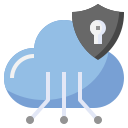
Key Security Considerations in Cloud Migration
Migrating to the cloud presents organizations with exceptional opportunities for scalability, flexibility, and innovation. However, these advantages also come with significant security challenges that must be thoughtfully addressed throughout the migration journey. Ensuring the integrity, confidentiality, and availability of data in the cloud requires a robust understanding of specific security concerns, thorough planning, and the implementation of best practices tailored to cloud environments. This page explores the pivotal security considerations organizations should address to secure a smooth and safe transition to the cloud, safeguarding sensitive information and business operations at every stage.
Data Protection and Privacy
Encryption serves as the backbone of data security in the cloud, ensuring that information remains confidential and unreadable to unauthorized parties. During cloud migration, it is crucial to utilize robust encryption protocols both when data is stored (at rest) and during transmission (in transit). Organizations must not only select suitable encryption standards but also manage and safeguard encryption keys so that access is strictly controlled. A mismanaged key can render even the strongest encryption useless, exposing sensitive data to potential breaches. Therefore, a well-defined encryption policy, regularly audited for effectiveness, is paramount to protecting valuable business information as it moves to and operates within the cloud environment.


Threat modeling is a proactive technique that enables organizations to anticipate, identify, and prepare for security threats specific to their cloud migration. By systematically evaluating the new cloud architecture, data flows, and user interactions, teams can pinpoint areas of vulnerability and gauge potential attack vectors. This forward-looking approach means defenses can be designed and implemented before adversaries can exploit any openings. Thorough threat modeling not only uncovers risks but also supports ongoing security operations by providing benchmarks for continuous improvement and incident response planning as the cloud environment evolves.

As cloud infrastructures are highly dynamic and interconnected, proper network segmentation is essential to limit the potential impact of security breaches. Dividing cloud workloads and resources into discrete segments prevents intruders from moving laterally within the environment if an initial compromise occurs. Applying granular network controls, such as virtual firewalls and private subnets, enhances oversight of traffic flows and ensures only authorized communications occur between resources. These strategies significantly reduce exposure to attacks and uphold the principle of least privilege, making it much harder for a threat to escalate into a full-scale incident.

Most organizations rely heavily on vendors, partners, and service providers during and after migrating to the cloud. However, each third-party relationship introduces additional risks, especially if these external parties do not adhere to the organization’s security standards. Effective third-party risk management involves conducting due diligence before engaging cloud providers, regularly auditing their security practices, and stipulating robust contractual agreements to enforce compliance with security requirements. Continuous oversight and communication ensure that all parties uphold a strong security posture and that any vulnerabilities arising from dependencies are promptly identified and mitigated.
Ongoing Monitoring and Incident Response
Continuous Security Monitoring
Maintaining real-time visibility over cloud environments is essential to detect suspicious activity, misconfigurations, or policy violations as soon as they emerge. Modern cloud monitoring tools leverage automation and artificial intelligence to analyze vast volumes of data and generate timely alerts about potential threats. By integrating these solutions into the migration workflow, organizations ensure that their security teams are always informed about the current state of their assets. This capability is not only critical for stopping attacks but also supports compliance efforts and provides actionable intelligence for refining security policies on an ongoing basis.
Incident Detection and Response Planning
No matter how robust the initial defenses, the possibility of a security incident cannot be entirely eliminated when operating in the cloud. Establishing clear incident detection and response plans before, during, and after cloud migration is vital to minimize the impact of breaches or disruptions. These plans should define roles and responsibilities, forensic analysis procedures, communication strategies, and regulatory reporting obligations. Regular training and simulation exercises further empower teams to react swiftly and effectively. A well-prepared incident response capability ensures business continuity, preserves stakeholder trust, and helps prevent minor incidents from escalating into major crises.
Logging and Audit Trails
Comprehensive logging and auditing are fundamental components of any cloud security strategy. These processes involve recording access, changes, and system activities in a tamper-proof manner, enabling organizations to investigate anomalies, prove compliance, and demonstrate due diligence in the event of an audit or incident. Implementing centralized log management solutions tailored for cloud environments ensures that all relevant events are captured regardless of the underlying providers or architectures. Detailed audit trails are indispensable for root cause analysis, ongoing compliance, and continually refining security measures as threats and requirements change.
